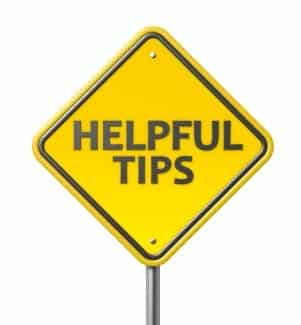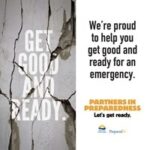Emergency Preparedness Plans For Your Entire Family
Recently, in 2009, central and southern Ontario was besieged by numerous tornados. Eleven of these twisters touched ground. They damaged over 600 homes. In 2006, three storm systems roared up the west coast of Canada. Heavy winds and rain left over 240,000 people with no electricity, according to the Edmonton Sun.
Natural disasters can happen to anyone at anytime. Canada has experienced raging forest fires, devastating earthquakes, rising flood waters, and avalanches. While the government of Canada implements several emergency programs to help the residents, you can do your part in protecting yourself and your family by engaging in emergency preparedness. Here are 3 tips that will help you and your family during a disaster.
Emergency Planning Tip #1: Know What Natural Disasters Happen In Your Region
If you live on the coast of British Columbia, you will be affected by earthquakes more than if you lived in the provinces of Manitoba, Alberta, or Saskatchewan. Avalanches may be a common occurrence along the Canadian Rockies than it would be for people who live in Nova Scotia. Your location makes a difference on the types of natural disasters you may see.
For this reason, you need to do your research concerning what natural disasters affect your region. When you know what you might experience, you can properly plan escape routes and emergency kits with what you truly need in case you are in the middle of a disaster area.
Emergency Planning Tip #2: Prepare An Emergency Kit
Everyone should have at least one emergency preparedness kit inside their home and keep a second kit inside your vehicle. This ensures that if you have to evacuate your home and you leave the kit behind, you will still have one in easy reach. In addition, if you are out driving to work or home and get caught in a natural disaster, you will have the supplies you need to keep safe.
Store the basic items in your emergency preparedness kit. The kit should hold these following items:
• 2 liters of water per person to use per day;
• Blankets;
• Flashlights;
• Can opener;
• First Aid kit;
• Prescription medications;
• Extra cash;
• Copies of important personal information such as medical records, birth certificates, and passports.
Place all these things in a backpack or suitcase that you can easily carry along wherever you go. Make sure medications, cash, documents, and flashlights are placed in waterproof containers. You should also consider taking along portable radios to hear the latest news updates, toilet paper, and canned food according to the Government of Canada’s Health Canada website.
Emergency Planning Tip #3: Have An Escape Route
If you need to leave your home immediately during a fire or earthquake, you should set up an escape route plan to ensure your entire family gets out of the house safely. Create and review escape route plans with every family member so they know how to get outside safely. You should also set up a meeting place that everyone should go to so the entire family can meet at a safe location away from the danger.
Emergency Preparedness Increases Your Chances Of Staying Safe
With just a few minutes of planning, you can make sure you and your family will survive whenever a natural disaster strikes. While disasters can happen in a matter of seconds, you can increase your chances in staying safe and having the things you need until the disaster is over by having an emergency kit and a solid escape plan.








